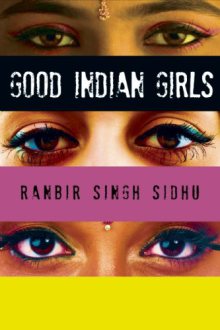What draws you to the short story format, and how do you approach it when you are writing?
 The short story is one of the most challenging forms — you have to really reduce a very large story, sometimes what is at heart the story of a whole life, into very few pages and a couple, sometimes fleeting, incidents, and at the same time make it alive, make it meaningful, and make it moving. I can work for years on a story, and often start one, get a few pages in, and then stop, unable to continue, and it sits there, for as long as five or six years, before I discover what it is that happens next.
The short story is one of the most challenging forms — you have to really reduce a very large story, sometimes what is at heart the story of a whole life, into very few pages and a couple, sometimes fleeting, incidents, and at the same time make it alive, make it meaningful, and make it moving. I can work for years on a story, and often start one, get a few pages in, and then stop, unable to continue, and it sits there, for as long as five or six years, before I discover what it is that happens next.
Have you had an experience where people in your own life recognized themselves — rightly or wrongly — in your stories and confronted you about it?
No — I don’t write so directly from life. However, I once used a friend’s name in a story, and he did confront me. He was annoyed that I only used his name. He wanted me to use all of him!
But friends do ask to be included, and I never know what to say. Are you sure? You want to be in one of my stories? At a family dinner, when a cousin said that he wanted to be included, my dad piped up and shook his head, “No, you really don’t want to be in one of his stories!” It was funny, because I hadn’t realized Dad had read any of my stories.
Who are your literary heroes and why?
I suppose literary heroes are different from favorite writers, but it seems hard to separate the two. I’d count Alasdair Gray in both categories — he’s the Scots writer and author of Lanark, which I remember reading — maybe devouring is a better word — when it was released in the US in 1985. He achieved success late in life, and is also a noted painter and muralist, so I very much admire his ability to move between different forms of art.
Another similar writer, who is also an artist, is Günter Grass. Along with his fellow German, Heinrich Böll, he was important early on for me — I read everything both writers wrote. They seemed to be trying simultaneously to contribute to the cultural rebuilding of Germany after the war while absolutely refusing to be blind to the horrors inflicted by the Nazis, and the endless hypocrisies the country was drowned in during the post-war years.
And finally, I’d put Jeanette Winterson in that list. She is one of those courageous novelists who has never shied away from pushing the form as far as she needs to take it — and she’s had successes and failures — while at the same time being often quite emotionally naked and fearless.
What were the last two books you read?
I just finished Thomas Pynchon’s marvelous, and side-splittingly funny, Inherent Vice. And I’m currently reading a really impressive debut collection by Paul Maliszewski called Prayer and Parable. These are short, quite intense, and sometimes slightly magical, tales set in a current-day America, but it always feels a little off-kilter. There’s a real, earned strength to his voice, and almost none of the stories fail to genuinely surprise. That book is highly recommended.
What are you working on next?
I’ve recently completed a novel called Deep Singh Blue, which is set in the California of my youth, and I’m at work on a much longer novel, one I’ve been working on for several years. Getting back into it has been really enjoyable.
Pavani Yalamanchili is a co-founder and editor of The Aerogram. Email her at editors@theaerogram.com. Find The Aerogram on Twitter @theaerogram.













very insightful!